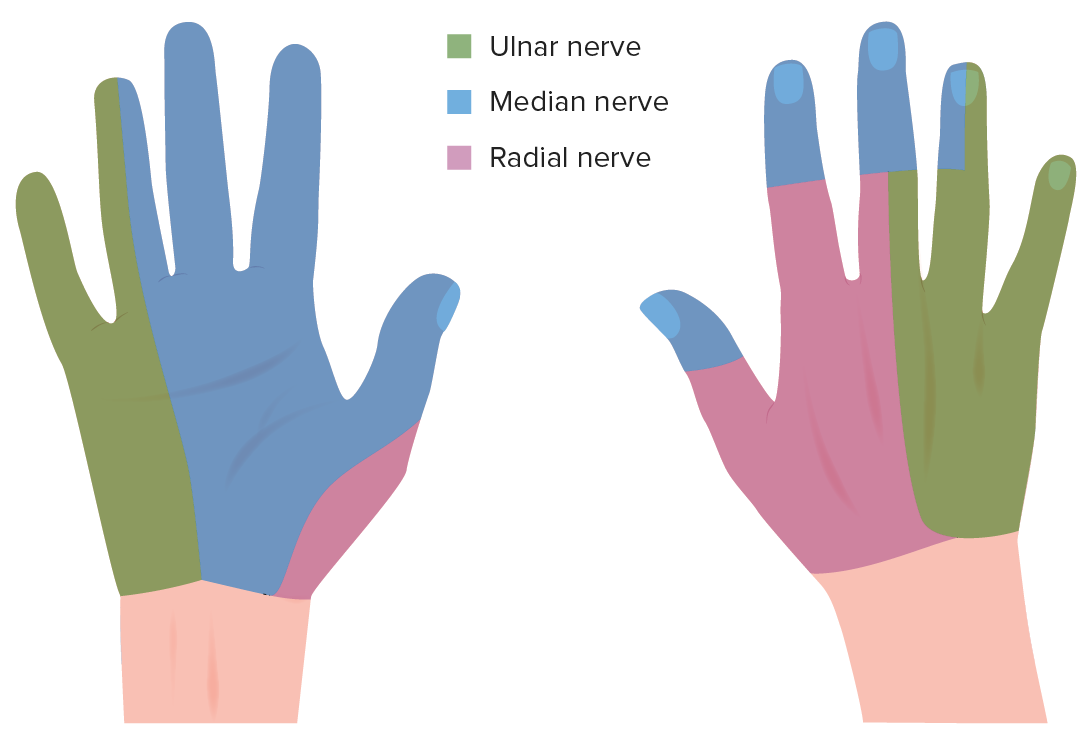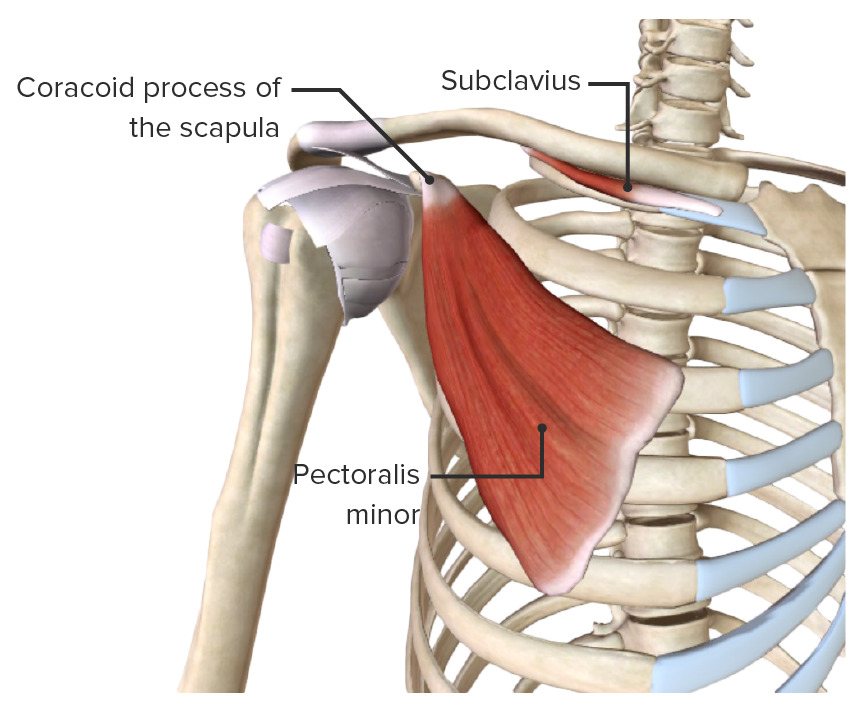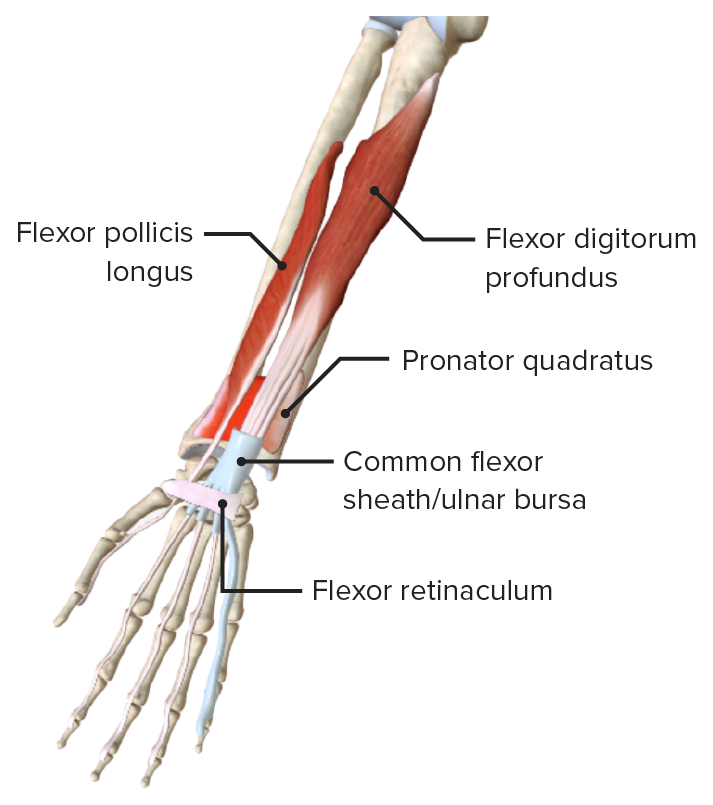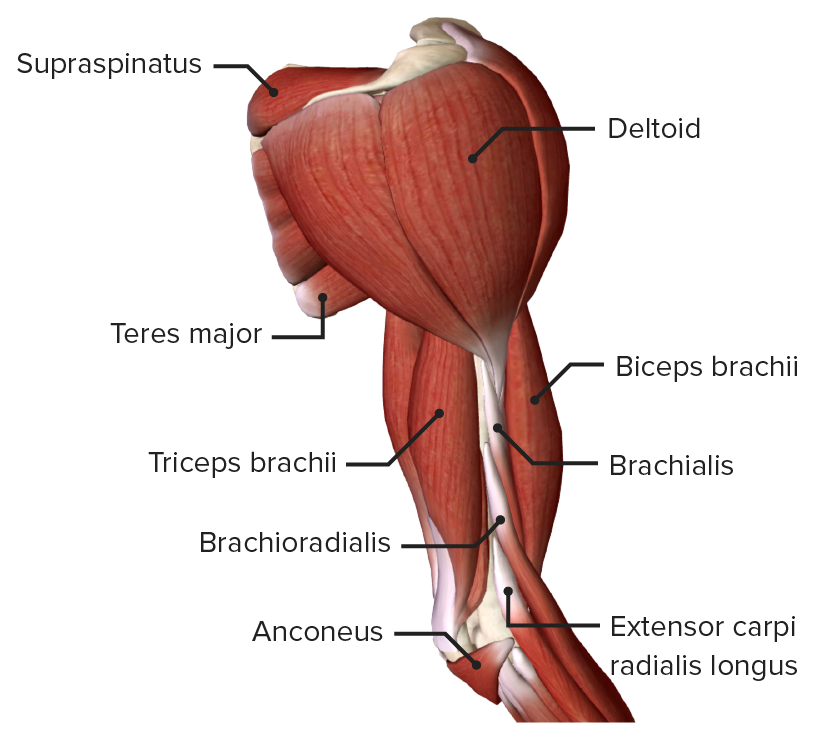Playlist
Show Playlist
Hide Playlist
Osteology of the Upper Limbs
-
Slide Osteology of the Upper Limbs.pdf
-
Reference List Anatomy.pdf
-
Download Lecture Overview
00:01 So, now, let's have a look at the osteology of the upper limb and really start looking at the bony skeleton. 00:07 Now, it's important to recognize that there are lots and lots of bony landmarks within the upper limb and it's not necessarily important for you to keep all of these lodged in your memory but they're important as nerves and blood vessels can pass through various grooves that are created. 00:25 They're important because they offer muscle attachments sites to increase the area in which muscles can attach and therefore, enhance the range of movements that we have. 00:36 But there can be a lot of these bony prominences and they can be difficult to remember because there's lots of them. So, maybe, try and start with the key ones associated with the key muscles and key neurovasculature which will come, too. 00:50 But don't try and remember them all straight off. 00:53 Before we go into the osteology of the upper limb, let's just remember that we have two paths to our human skeleton. 00:59 We have the axial skeleton which is really that part passing from the vertebral column, the associated ribs, and the skull. 01:07 And then, the appendicular skeleton. 01:09 And here, this superior appendicular skeleton is really including everything within the upper limb. 01:15 So, the clavicle, the scapular, the humerus, ulnar, radius, and the bones of the hand. 01:22 So, let's start by having a look at some of these bony regions. 01:27 Here, we can see the connection between the axial and the appendicular skeleton where we have the sternoclavicular joint. This is a joint between the medial end of the clavicle and the sternum. 01:39 And we can see here that that is the only bony attachment between the axial and the appendicular skeleton in this superior region. So, here, we can see the clavicle as mentioned. 01:50 Here, we have the scapular which isn't attached to the axial skeleton by a bony joint but it does attach itself to the axial skeleton by way of some muscles. 02:02 We'll come back to those later on. We have the clavicle. 02:05 We have the scapular. Here, we have the humerus. 02:08 And then, we have the two arms within the two bones within the forearm. 02:13 We have the ulnar and the radius. 02:16 We'll then move into the bones of the hand and we have the wrist bones or the carpal bones. 02:20 These are connected to the metacarpal bones. 02:23 And then, finishing off with the phalanges, the very distal parts of your fingers. 02:28 We'll cover these in more detail later on.
About the Lecture
The lecture Osteology of the Upper Limbs by James Pickering, PhD is from the course Osteology and Surface Anatomy of the Upper Limbs.
Included Quiz Questions
Which joint connects the superior appendicular skeleton to the axial skeleton?
- Sternoclavicular joint
- Shoulder joint
- Sternocostal joint
- Xiphisternal joint
- Atlantoaxial joint
Which digit has 2 phalanges?
- First digit
- Second digit
- Third digit
- Fourth digit
- Fifth digit
Customer reviews
5,0 of 5 stars
| 5 Stars |
|
5 |
| 4 Stars |
|
0 |
| 3 Stars |
|
0 |
| 2 Stars |
|
0 |
| 1 Star |
|
0 |







